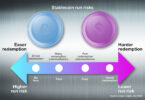Today Bank Indonesia published its Indonesian Payment System Blueprint (BSPI) 2030. One of the five major initiatives is its central bank digital currency (CBDC) work, the digital rupiah.
It previously announced three stages of its proof of concept CBDC work. The first is the basic issuance and redemption of a wholesale CBDC (wCBDC) using DLT, which was completed during the first half of 2024. Secondly, it plans to explore the integration of a wCBDC with a digital securities ledger. Finally, it will use the wCBDC as a foundation for a retail CBDC.
While today’s paper provides an update, and reiterates the three phases first outlined in 2022, there is a subtle change in emphasis towards the wCBDC. For example, now the third phase following the wCBDC digital securities work will focus on wCBDC for cross border payments.
Notably, Bank Indonesia is an observer on the mBridge cross border CBDC initiative that uses wCBDC. mBridge recently entered the minimum viable product (MVP) phase with its initial participants, including the BIS Innovation Hub and the central banks of China, Hong Kong, Thailand and the UAE. Saudi Arabia recently joined and there are at least 22 observer banks.
wCBDC phase 2 work
Meanwhile, Bank Indonesia is readying to start the phase two digital securities work, which is divided into three groups of tasks.
First it will test the issuance, transfer and redemption of digital securities, both natively issued tokens and the tokenization of conventional securities. This will explore how the digital security designs impact the Digital Rupiah Depository (KRD) that manages the issuance of the wCBDC and the Digital Securities Depository (KSD). The central bank says these two functions will ensure it has control over money in circulation.
The second step will explore the use of digital securities in monetary operations and financial market transactions. It will focus on the rupiah money market. As part of these trials, the central bank wants to see if it can replicate central bank operations using DLT, although it recognizes there should also be value add from using new technology.
Finally, it will explore extending the functionality of digital securities, including programmability, composability and tokenization. These features need to prove that issuing a wCBDC is worthwhile.
Indonesian sandbox
As part of today’s report, the central bank also outlined its plans for the Indonesia Digital Innovation Center (BIDIC). Its functions include supporting a sandbox environment for testing, market intelligence, and providing a space for research and collaborative design with industry.






